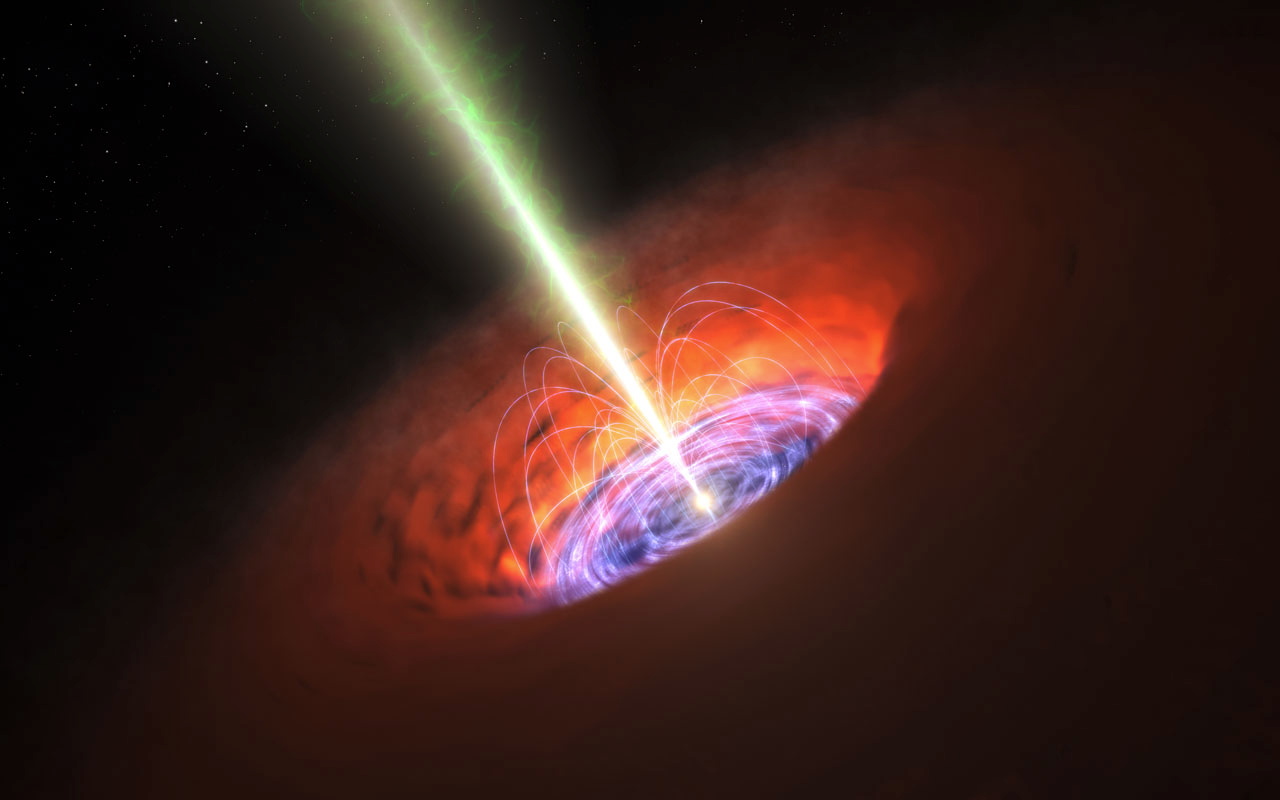
Editor's Note: This story was updated at 9:45 a.m. E. T. on Feb. 29
Quick, what's the best way to provide an alternative source of energy for the Earth?
If you answered, "Get a mini black hole to orbit Earth," then you and physicist Stephen Hawking may be thinking on the same wavelength.
In a lecture on Feb. 2, the famed scientist said tiny black holes, about as massive as the average mountain, could power all of the world's energy needs.
The trick? Proving they exist, finding them and then figuring out how to harness all of that energy safely. [8 Ways You Can See Einstein's Theory of Relativity in Real Life]
"There is nothing technically wrong with this idea, but it is not very practical, at least within the next 10,000 years," said Sabine Hossenfelder, a physicist at the Frankfurt Institute for Advanced Studies in Germany, who blogs at backreaction.blogspot.com.
Leaky black holes
Get the world’s most fascinating discoveries delivered straight to your inbox.
Originally, scientists believed black holes were regions of collapsed matter so dense that nothing, not even light, could escape from their gravitational pull. Then, in 1974, Hawking put forward the idea that black holes leak quantum particles, a process now known as Hawking radiation.
The biggest black holes, which are billions of times more massive than the sun, live at the hearts of galaxies, while black holes about 10 times the size of the sun are peppered throughout the universe, Hossenfelder said. Such massive black holes are very cold, and so emit Hawking radiation. But researchers have also proposed the existence of relatively tiny black holes that would be hotter, and so emit more particles via Hawking radiation.
"A mountain-sized black hole would give off X-rays and gamma-rays at a rate of about 10 million megawatts, enough to power the world's electricity supply," Hawking said in the lecture. "It wouldn't be easy, however, to harness a mini black hole. You couldn't keep it in a power station, because it would drop through the floor and end up at the center of the Earth."
Elusive space objects
But there's another problem: No one has ever found evidence of these mini black holes, and there are good reasons to doubt they exist, Hossenfelder said.
In theory, these black holes formed early in the universe's history, when matter existed in a hot soupy plasma. As this primordial soup got squished together and flung apart, causing fluctuations in density, the theory held, occasionally some regions got so dense that the matter collapsed in on itself, forming mini black holes, Hossenfelder said.
But to form these primeval black holes, most models assume a high level of density fluctuations, which also tend to produce many more black holes than are present in the universe.
"You don't want everything to end up in black holes," Hossenfelder told Live Science.
Major towing problem
Then, presuming these miniature black holes are real and that people could detect the objects' existence, the problem becomes how to reach the monstrous powerhouses. That could take tens of thousands or even 100,000 years, Hossenfelder noted.
Next comes the monumental task of harnessing the black holes' power for energy.
"You cannot land on it and put some booster on it and move it, because it does not have a surface," Hossenfelder said. By using the gravity of a much larger object, people could theoretically tow a mini black hole, eventually coaxing it to sit in Earth's orbit, she said. Scientists would also have to harness the black hole's energy while simultaneously shielding humans from the black holes' harmful radiation (a relatively simple matter compared to all of the other tasks involved in the setup, she said).
DIY black holes
Of course, if venturing deep into outer space is unrealistic, there are other ways to harness mini black holes, Hawking said in the lecture.
"We might be able to create micro black holes in the extra dimensions of space-time," Hawking said.
But these extra dimensions may or may not exist: The Large Hadron Collider (LHC) has so far seen no trace of them, Hossenfelder said. And if there are extra dimensions, that doesn't mean that lab-made mini black holes could power anything. If particle colliders such as the LHC did produce these tiny black holes, the objects would stick around for just 10 raised to the minus 23 seconds, she said.
"These tiny black holes would decay immediately. There is no way you could harness their energy," she said.
Editor's Note: This story was updated to note that Sabine Hossenfelder is no longer working at Nordita. She is now at the Frankfurt Institute for Advanced Studies.
Follow Tia Ghose on Twitterand Google+. Follow Live Science @livescience, Facebook & Google+. Original article on Live Science.

Tia is the editor-in-chief (premium) and was formerly managing editor and senior writer for Live Science. Her work has appeared in Scientific American, Wired.com, Science News and other outlets. She holds a master's degree in bioengineering from the University of Washington, a graduate certificate in science writing from UC Santa Cruz and a bachelor's degree in mechanical engineering from the University of Texas at Austin. Tia was part of a team at the Milwaukee Journal Sentinel that published the Empty Cradles series on preterm births, which won multiple awards, including the 2012 Casey Medal for Meritorious Journalism.


